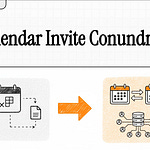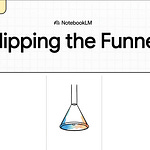Introduction: The Unspoken Rules of Our Digital Time
For most of us, the digital calendar feels sacred. It’s the place where our time lives—a grid of boxes that organizes our meetings, birthdays, and reminders into a coherent whole. To have someone else manage that space can feel invasive, cluttering our days with invites that chip away at our sense of control.
Instinctively, we react by trying to protect our calendars, walling them off from the noise of the digital world. But this view misses a powerful truth. The problem isn’t that our calendar is too open; it’s that it’s the most underutilized communications channel we have. The solution to fixing it isn’t to build new walls, but to activate the powerful tools already built into the system we use every day.
1. The Big Reframe: Your Calendar Doesn’t Need Protection, It Needs Liberation
For decades, we’ve treated the calendar like a static artifact—something to be protected from change. This view isn’t just outdated; it’s fundamentally wrong. We should instead see the calendar for what it truly is: a dynamic and powerful communication channel waiting to be activated.
While email and messaging apps compete in a noisy, attention-based economy, the calendar operates on a different axis entirely: one of trust, structure, and intent. This unique position makes it the perfect foundation for a more innovative, more respectful communication model. We’ve been guarding a sacred cow when we should have been waking a sleeping giant.
The calendar doesn’t need to be protected. It needs to be liberated.
2. The Analogy: The Solution to Calendar Spam Already Exists in Your Email
The blueprint for liberating the calendar already exists in the most familiar digital space we have: our email inbox. Consider the communications you receive from a company like Amazon. Every email includes a familiar option: “Update your preferences” or “Unsubscribe.” No one considers these messages spam because they are built on a sophisticated, user-controlled permissions system.
Behind that single link is a centralized dashboard where you control the entire flow of communications. You decide which categories you want to hear about—order updates, product recommendations, or special promotions—and can toggle them on or off at any time. The system is simple, transparent, and built entirely around consent. Each toggle is a promise: only send me what I’ve asked for, and always in a way that respects my time.
Now, imagine applying this exact permission framework to calendar invites. Instead of managing emails about time-sensitive events, you would manage the events themselves. You could visit a preference center and choose to receive:
• “Invites for billing or subscription renewals”
• “Invites for product updates or webinars”
• “Invites for exclusive events”
This shift is decisive because it transforms the calendar invite from a one-way interruption into a respectful, two-way conversation. It’s a model that honors the recipient’s time by giving them complete control.
3. The Hidden Feature: Your RSVP Is a Built-In “Unsubscribe” Button
The most remarkable aspect of this vision is that the necessary permission system already exists within the calendar protocol itself. We just haven’t been using it properly. Every calendar invite comes with an RSVP field: Yes, No, or Maybe.
The twist lies in reframing the RSVP. A ‘No’ is not just a social signal of unavailability; it is a permission signal that revokes consent for further communication about that specific event.
In a modern system, a “No” RSVP can automatically remove you from all further updates and reminders for that specific event. No new times, no follow-ups, no more notifications. It effectively becomes a one-click opt-out for that single line of communication, turning a simple response into a powerful act of control.
It’s the calendar’s built-in unsubscribe button — just never activated.
This approach doesn’t require a fundamental change to how the calendar works. It doesn’t replace the tools we know; instead, it extends their capabilities, making them more intelligent and responsive to user intent.
Conclusion: Making Our Time Smarter
By reframing our perspective, we can see the calendar not as a sacred space to be guarded, but as our most potent and underutilized communication channel. The consent-based model we already trust in our email provides the perfect blueprint, and the simple RSVP button holds the key to activating it.
By extending these familiar permission models to the calendar, we don’t make it less sacred—we make it more thoughtful, more respectful, and infinitely more helpful. We transform “time on a page” into a living conversation between sender and receiver.
The tools to awaken this sleeping giant are already built into our daily lives. The only question is when we’ll decide to use them.
Front End Software Console Demo
Back End Calendar Invite Server
GITHUB Docs
https://github.com/calendarinvite/calendarinviteserver
https://github.com/calendarinvite/calendarinviteserver/wiki
YouTube
https://www.youtube.com/@calendarinvite
Custom Calendar Invite Demo Site – 2025 / 2026 NFL







